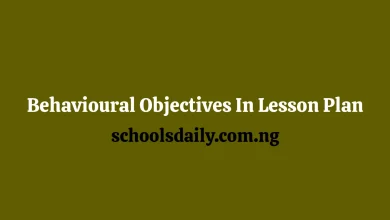Importance of Micro Teaching To Student Teacher

As I reflect on my journey as a student teacher, I recall the micro-teaching practice that played a significant role in shaping my teaching skills. Through this experience, I gained valuable insights into the importance of micro-teaching for aspiring educators like myself. In this article, I’ll explore the fundamental reasons why micro-teaching is exceptionally important for student teachers.
During my micro-teaching practice, I had the opportunity to hone my teaching skills in a controlled environment. This experience allowed me to receive feedback, reflect on my teaching methods, and make necessary adjustments to improve my craft. As I navigated the challenges of classroom teaching, I realized that micro-teaching is an essential element in preparing student teachers for the realities of the profession.
In this article, I’ll delve into the pivotal reasons behind the importance of micro-teaching for student teachers. Becoming an effective teacher requires more than just knowledge; it demands practical skills and the ability to navigate real classroom challenges. Through micro-teaching, student teachers can develop these skills, build confidence, and refine their teaching techniques.
What is Micro Teaching?
Microteaching is a teacher training technique for learning teaching skills. It employs real teaching situations to develop skills and provides deeper knowledge regarding the art of teaching. This widely practiced technique enhances teaching skills by improving essential tasks, such as presentation and reinforcement skills. Microteaching benefits both novice and experienced educators, offering a platform for refining teaching abilities.
The fundamental skills emphasized in microteaching facilitate the learning process for novice teachers, making it easier for them to grasp the art of teaching. Its influence extends beyond education, with applications in health sciences and life sciences, contributing to more effective teaching experiences. Microteaching plays a pivotal role in promoting real-time teaching practices and fostering the development of educators at all levels.
Why Micro Teaching Is Important To A Student Teacher
Micro-teaching is a cornerstone of modern teacher training, serving as a vital bridge between theoretical knowledge and practical classroom application. It is a scaled-down teaching encounter where student teachers practice specific instructional skills with a small group of peers or students for a brief period. This focused approach is crucial for developing competent, confident, and reflective educators for the following reasons:
- Builds Confidence in a Controlled Setting: Micro-teaching offers a low-stakes, supportive environment for practice. By reducing the complexity of a full classroom—fewer students, shorter lesson times, and a single skill focus—it minimizes the pressure and anxiety often felt by novice teachers. This safe space encourages experimentation and risk-taking, allowing student teachers to build foundational confidence before facing a larger, more unpredictable classroom.
- Enables Mastery of Specific Teaching Skills: Rather than attempting to manage all aspects of teaching at once, micro-teaching isolates individual competencies for focused practice. Whether the skill is formulating effective questions, managing transitions, explaining a complex concept, or providing constructive feedback, this targeted approach allows for deliberate practice and mastery. Supervisors can provide precise, actionable feedback on that single skill, leading to more rapid and tangible improvement.
- Fosters Reflective Practice Through Immediate Feedback: A key feature of the micro-teaching cycle is the immediate feedback loop. Following a brief session, student teachers receive constructive criticism from supervisors, mentors, and peers. Often, sessions are recorded, allowing for self-assessment. This process encourages deep reflection, helping student teachers to accurately identify their strengths and pinpoint areas needing development. This cycle of practice, feedback, and refinement is fundamental to professional growth.
- Cultivates a Personalised Teaching Style: Micro-teaching provides a laboratory for student teachers to experiment with different instructional strategies and methods. By trying out various approaches in a controlled setting, they can discover what resonates with their personality and teaching philosophy. This exploration is essential for developing an authentic, flexible, and effective teaching style that they can confidently implement in their future careers.
- Simulates Real-World Classroom Dynamics: While scaled down, micro-teaching effectively prepares student teachers for the realities of the classroom. It provides practical experience in lesson planning, time management, and responding to student questions or unexpected behaviour. This simulation equips them with the practical skills and mental readiness needed to handle the dynamic environment of a real classroom, ensuring they are better prepared for their first teaching placements.
- Promotes a Collaborative Learning Community: Micro-teaching is often conducted in groups, creating a collaborative environment where student teachers learn from one another. By observing their peers, they are exposed to diverse teaching methods and creative ideas. This shared experience fosters a sense of community, encourages peer support, and helps build a professional network that can be invaluable throughout their careers.
- Enhances Self-Awareness and Professionalism: The process of planning, teaching, and then analyzing one’s own performance is a powerful tool for developing self-awareness. Student teachers become more attuned to their communication style, pacing, and classroom presence. This heightened awareness is the first step toward self-correction and continuous professional development, empowering them to take ownership of their growth as educators.
- Offers an Accessible and Cost-Effective Training Model: From a practical standpoint, micro-teaching is an efficient and economical training method. It requires minimal resources—a small space, a few participants, and a supervisor—and can be implemented in virtually any educational setting. Its affordability and flexibility make it an accessible tool for teacher training institutions worldwide, ensuring that more educators can benefit from high-quality, practical skills development.
In conclusion, micro-teaching is far more than a simple practice exercise; it is a transformative and indispensable component of teacher preparation. It systematically builds skills, fosters confidence, and cultivates the reflective habits necessary for creating effective and adaptable educators ready to meet the challenges of the modern classroom.



